If you’re looking for mountain scenery, abundant wildlife, epic hiking, world-class scenic drives and/or extraordinary natural attractions, you’ll find it all on a northern Rockies national parks road trip.
Driving from Wyoming across Montana, you’ll discover historic sites, encounter majestic animals, and see unforgettable landscapes. This road trip takes you to the ultimate trifecta of mountain national parks in America: Grand Teton, Yellowstone and Glacier.
Contents
Explore the National Parks of the Northern Rocky Mountains on This Epic Road Trip
All three of these national parks are phenomenal on their own. From the jaw-dropping, saw-toothed Teton Range to Yellowstone’s geysers and megafauna, and Glacier’s glorious glacial valleys, you could spend weeks, quite literally, exploring each park.
Together, however, they offer one of the greatest road trips on the planet. This northern Rocky Mountains national parks road trip has something for everyone.
Like staying at hotels? Take your pick from a variety of historic lodges in Grand Teton, Yellowstone and Glacier. Enjoy camping instead? There are countless wonderful campgrounds spread across these parks, too.
Want to do some scenic drives? Each park has its own amazing driving route!
The Teton Park Road, the Yellowstone Grand Loop Road, and Glacier’s Going-to-the-Sun Road all cater to motorists and bicyclists alike. In fact, these roads are among the greatest in the entire national park system.
And then there’s epic hiking, beautiful viewpoints, delicious local food (huckleberries!),… And the wildlife, of course.
Grand Teton, Yellowstone and Glacier are all home to grizzly bears, moose, wolves, bighorn sheep and other iconic American animals.
In short, you cannot go wrong with a road trip to the national parks of the northern Rockies. It’s one of the world’s greatest self-drive holidays. Now, let’s take a closer look at each of these three northern Rockies national parks.
This post about the ultimate national parks of the northern Rockies road trip contains affiliate links. You can read more about our Terms of Use / Disclosure here.
Grand Teton National Park, Wyoming
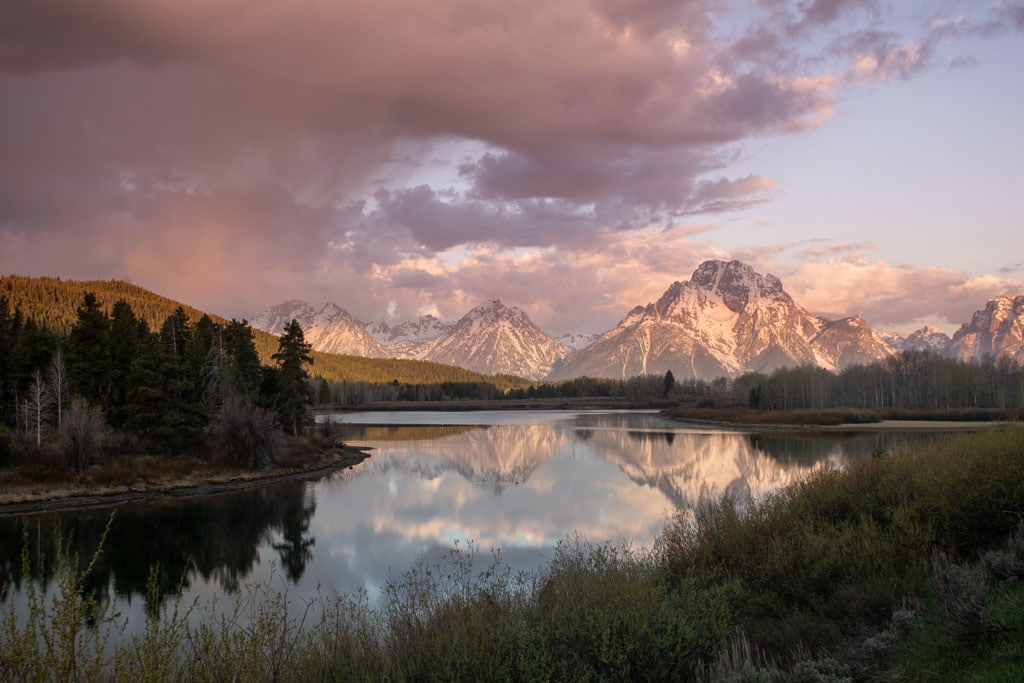
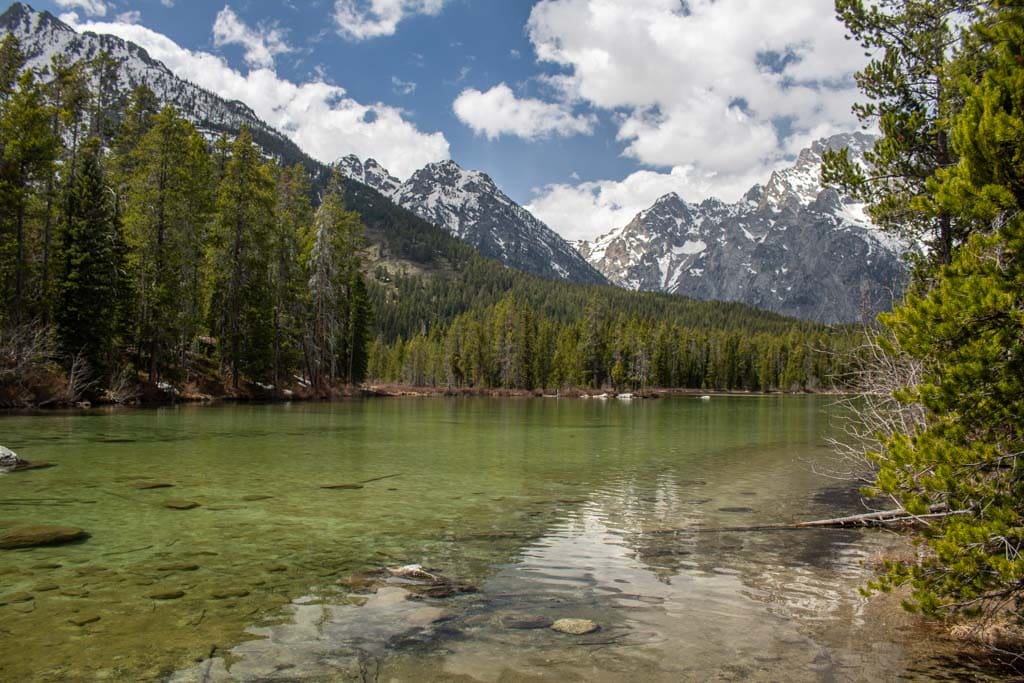
Start your northern Rockies national parks road trip in the vibrant western town of Jackson Hole and adjacent Grand Teton National Park. (The Jackson Hole Airport is the only public airport within a national park in the United States.)
Grand Teton National Park is home to the amazing Teton Park Road, but it’s much more than a drive-thru national park.
Although you’ll find numerous turnouts and viewpoints along the park’s main roads, such as Willow Flats, Oxbow Bend and Blacktail Ponds, this is a superb park to explore on foot, in a kayak or canoe, or on horseback.
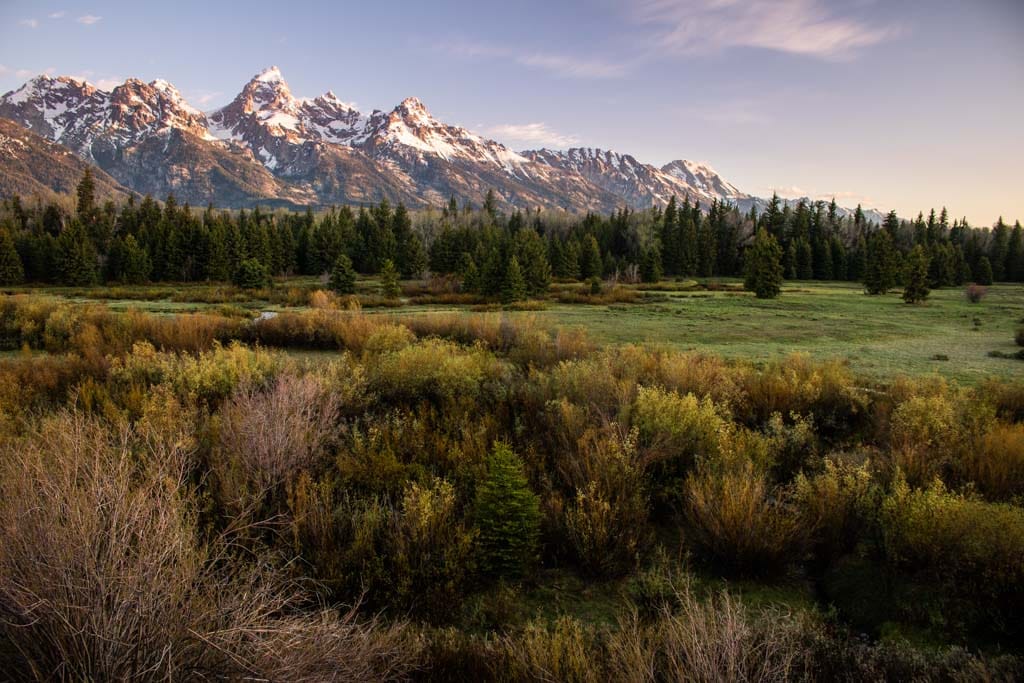
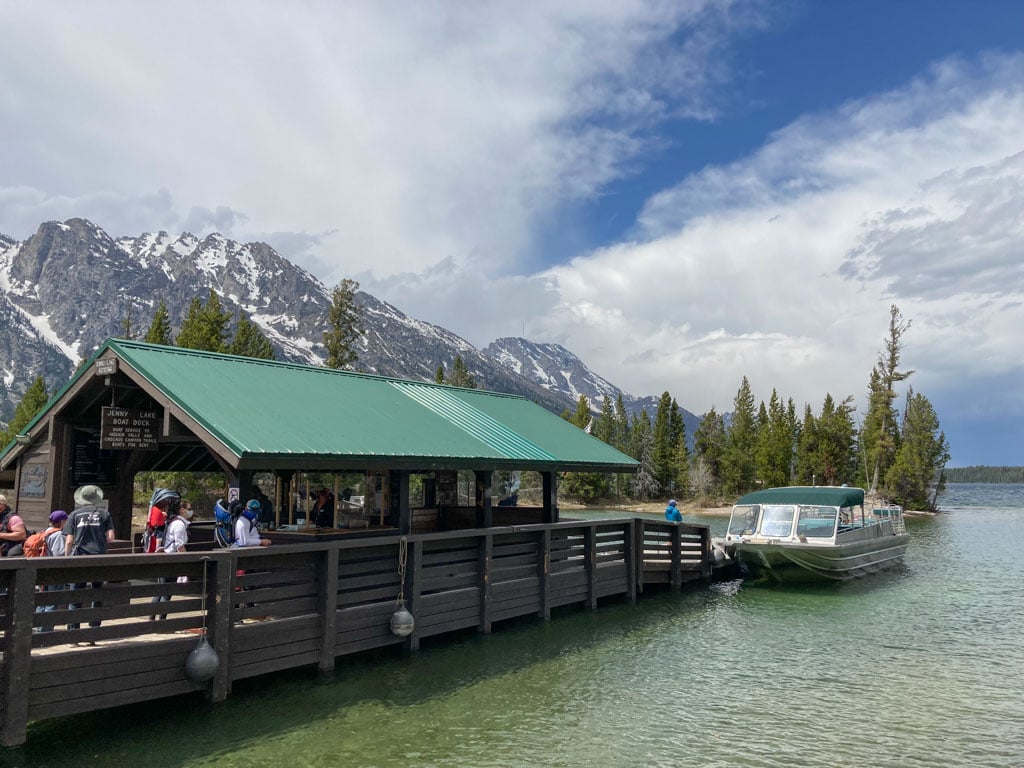
A dense network of hiking trails takes hikers along scenic lakeshores, across sagebrush meadows, through conifer forests and deep into the wildernesses of the Grand Teton canyons.
Wildlife encounters are quite common here, the park being home to everything from American bison, pronghorn, moose and elk to black and grizzly bears, even some wolves.
Find the best places to see moose in Grand Teton National Park here!
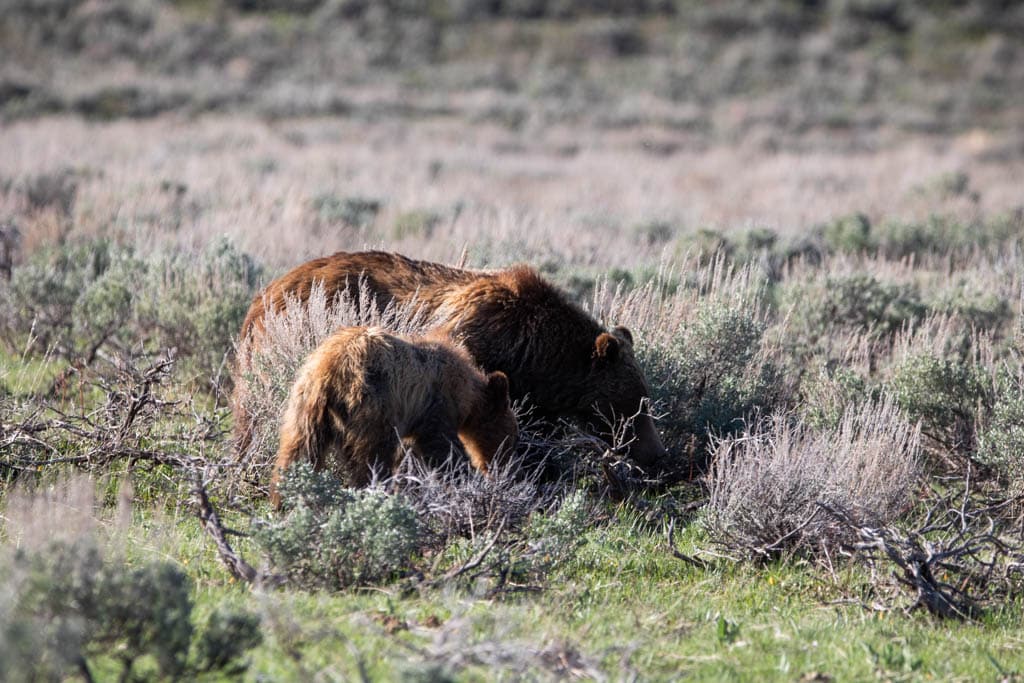
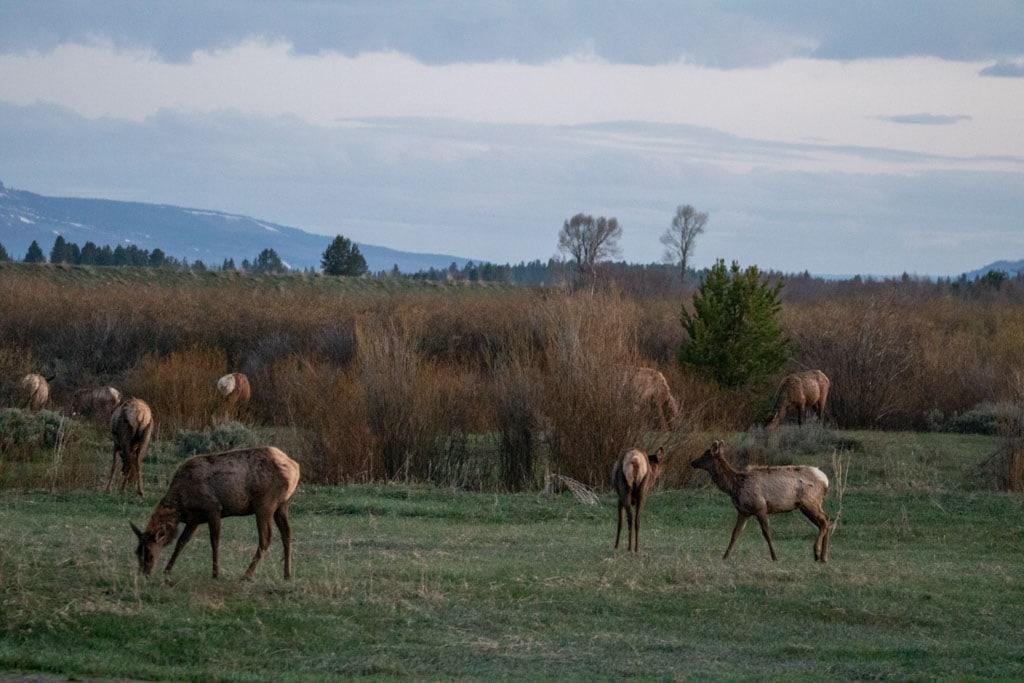
The first Europeans who explored what is now Grand Teton National Park were lonely French fur trappers.
These hardy wilderness wanderers clearly craved some female companionship, naming the mountains’ three main peaks “les trois tétons”—the three breasts.
Later on, settlers established ranches and homesteads in Jackson Hole, the most famous of which are found along Mormon Row.
The historic Chapel of the Transfiguration near Moose is renowned for the window behind its altar, which beautifully frames the Grand Teton peaks in the background.
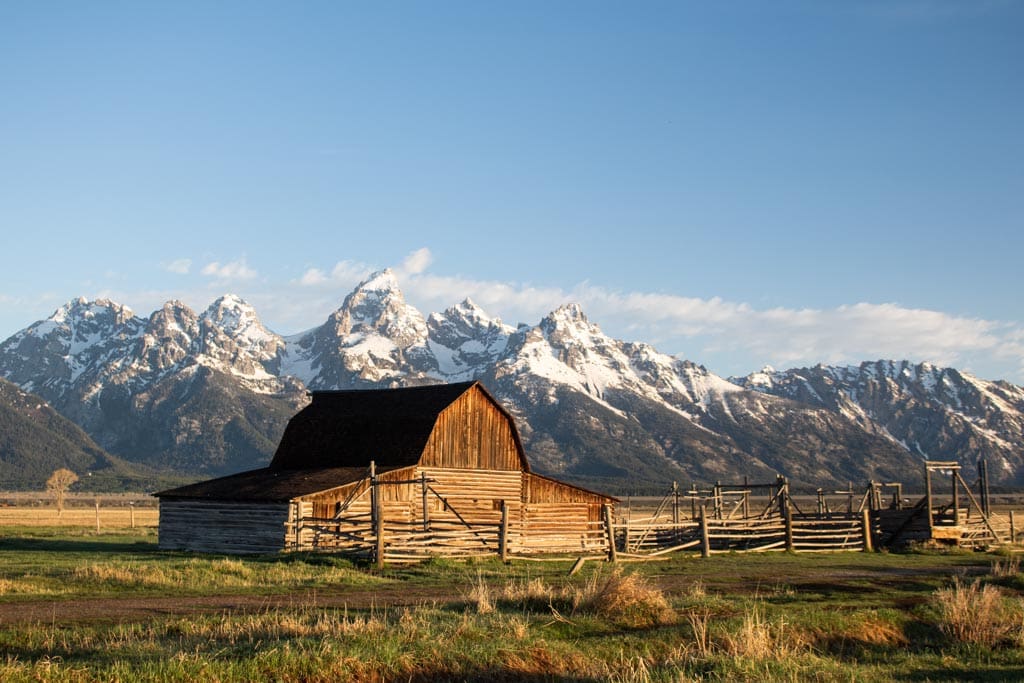
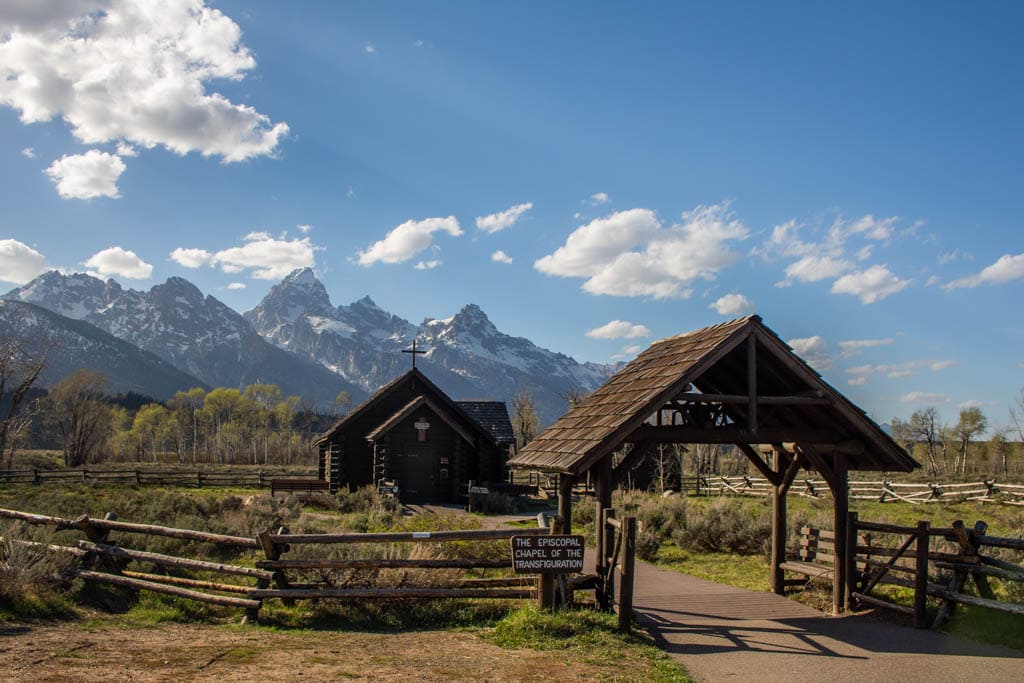
Exceptionally accessible and easy to explore, Grand Teton National Park allows you to hike in mountains, kayak on pristine lakes like Jenny Lake, see bison and bears, and indulge in succulent bison steak, hearty game chili or sweet huckleberry ice cream, all in the same day.
Grand Teton National Park Blog Posts
- Top Things to Do in Grand Teton National Park
- 12 Best Views of the Tetons (in Grand Teton National Park)
- 7 Easy Hikes in Grand Teton National Park
- Where to See Wildlife in Grand Teton National Park
- Top 7 Roadside Sunrise Spots in Grand Teton National Park
- Names of the Teton Mountain Peaks (With Photos)
Yellowstone National Park, Wyoming, Montana & Idaho
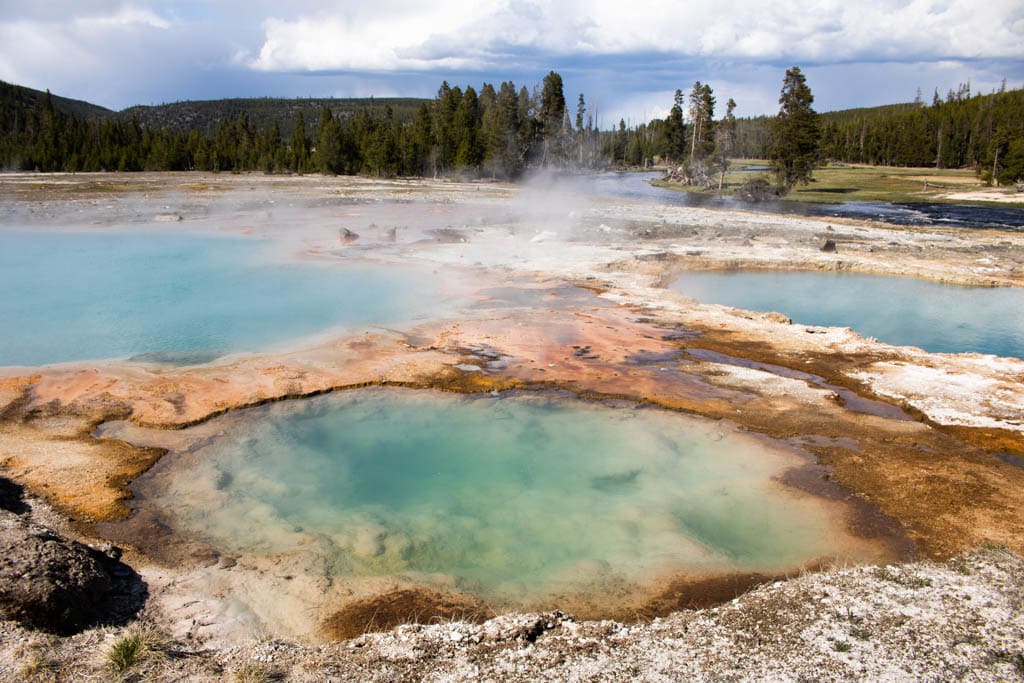
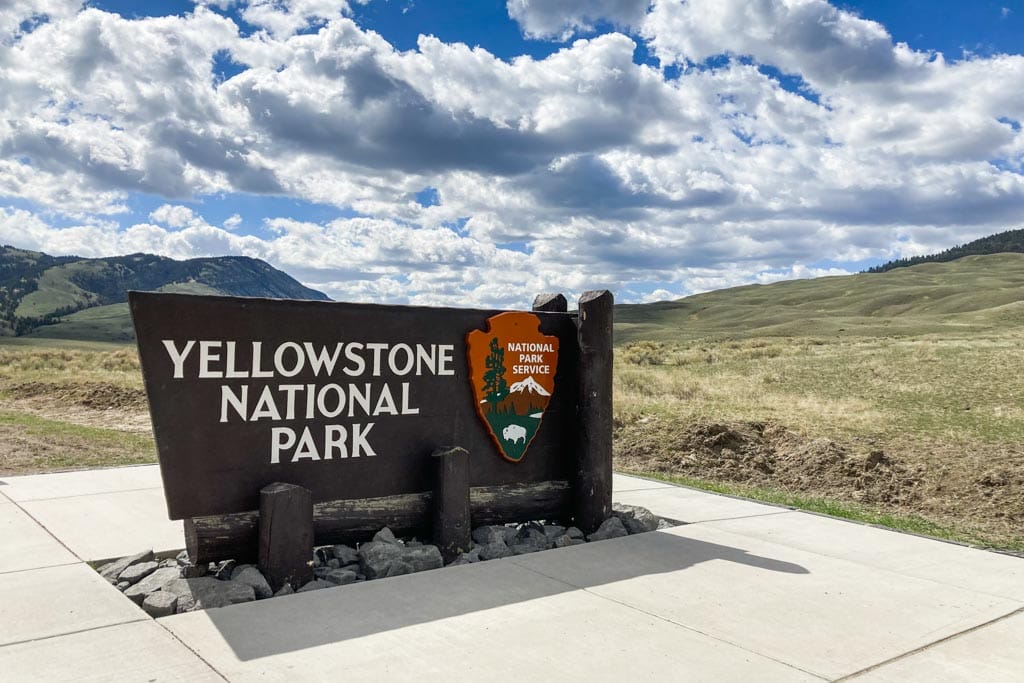
After exploring Grand Teton, continue your road trip to the northern Rocky Mountains national parks with several days in Yellowstone.
The John D. Rockefeller, Jr. Memorial Parkway connects Grand Teton and Yellowstone, making it incredibly easy to travel between both parks.
The world’s oldest national park and a UNESCO World Heritage Site, Yellowstone National Park is home to over 10,000 hydrothermal features, from geysers to fumaroles to hot springs, more than the rest of the world combined.
The park is also a refuge for megafauna, including bison, bears, moose, bighorn sheep, elk, and gray wolves.
Especially Yellowstone National Park’s wildlife-rich Northern Range, home to the sprawling Lamar Valley, is famous for its abundance of wildlife. The area is often, quite rightly, referred to as the “American Serengeti.”
Here, visitors can see the largest herds of wild bison and elk in America—Yellowstone is the only place in the country where American bison have lived continuously since prehistoric times—as well as pronghorn, black and grizzly bears, and gray wolves, which where reintroduced in the park in the mid-1990s.
In fact, the Lamar Valley is often touted as the best place to see wolves in the wild in the world.
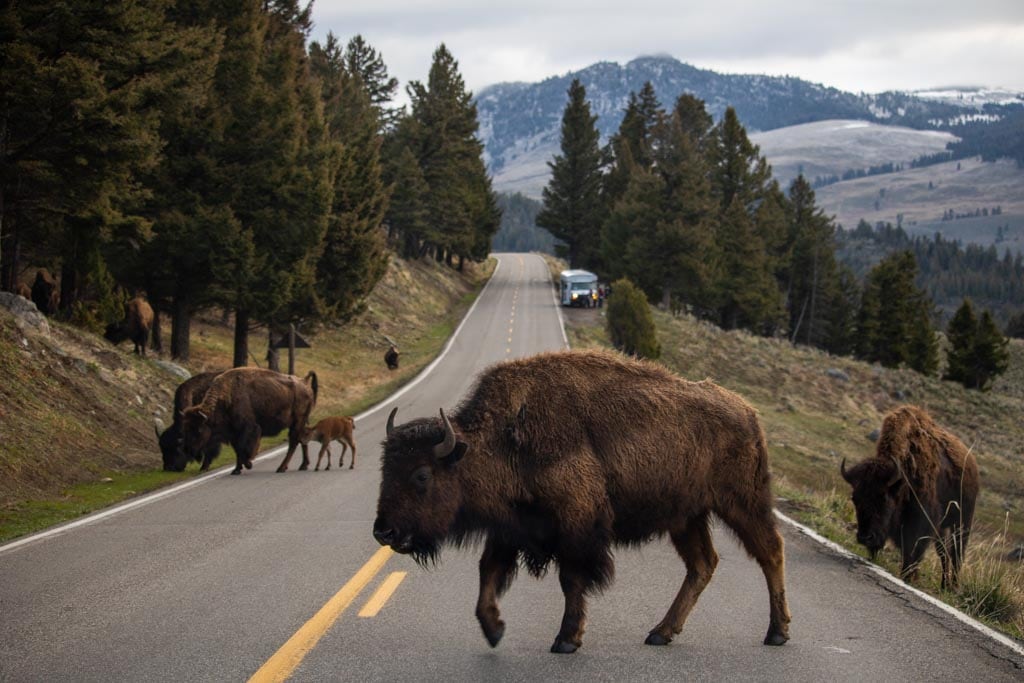
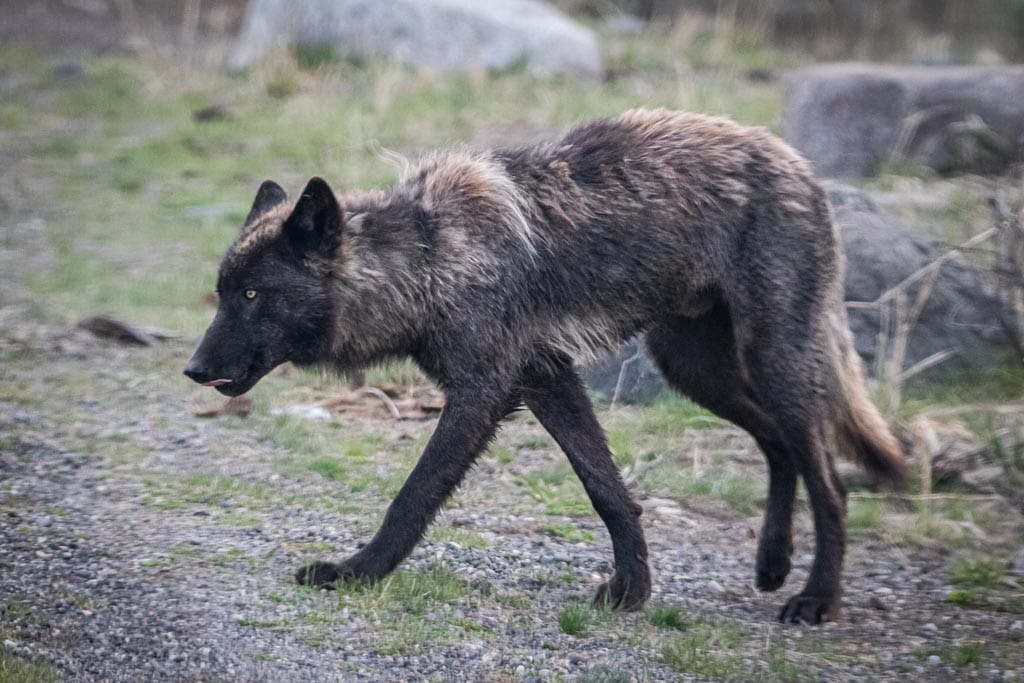
In the middle of Yellowstone National Park, a gigantic volcano slowly breathes—it literally rises and falls. The Yellowstone Volcano erupted about 650,000 years ago, leaving behind a massive 30-by-45-mile caldera.
This volcanic activity still fuels and powers the countless volcanic features for which the park is so famous.
It’s those unique features, especially iconic geysers like Old Faithful, that made the U.S. Congress set aside Yellowstone as America’s and the world’s first national park in 1872.
You can explore a number of different geyser basins around Yellowstone, including the Norris Geyser Basin, the Lower, Midway and Upper Geyser Basins, and the West Thumb Geyser Basin.
Mammoth Hot Springs in the northwest is home to stunning travertine terraces created by a kaleidoscope of hot springs.
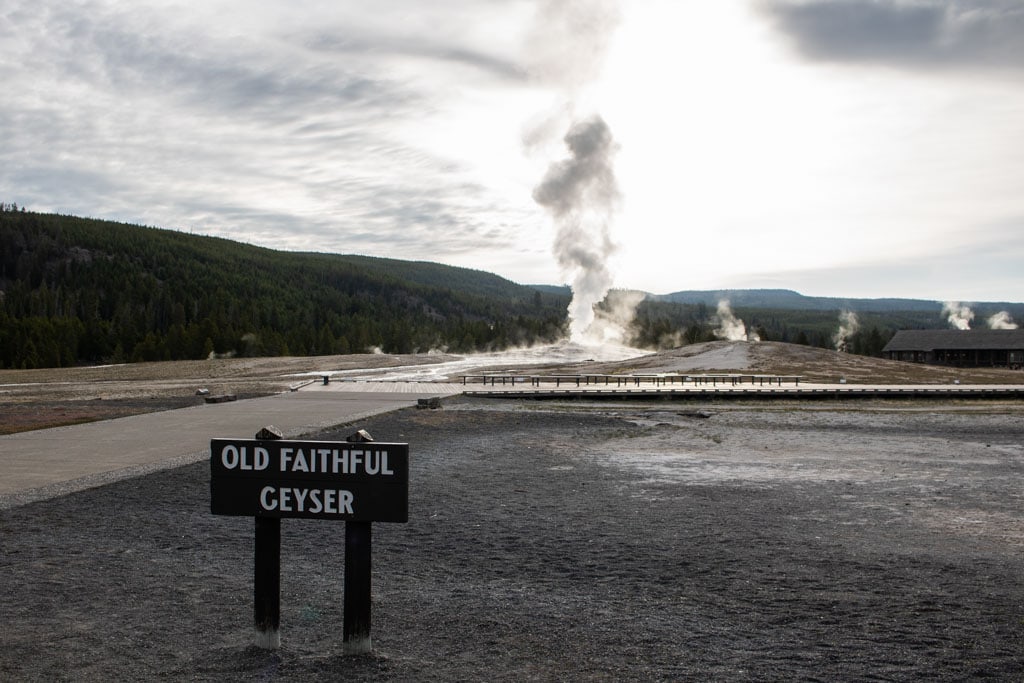
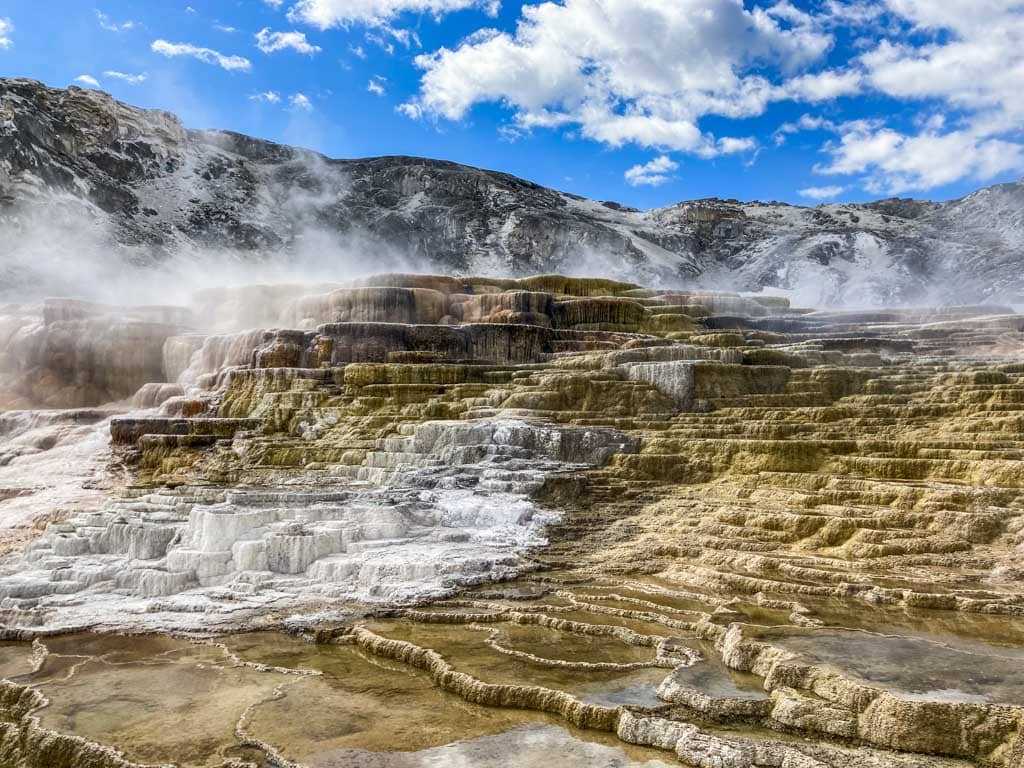
Although most renowned for its erupting geysers and multi-colored hot springs, Yellowstone National Park is much more than hydrothermal action.
The park encompasses a variety of ecosystems, from the near-desert-like hills at the North Entrance, where you can walk or drive through the iconic Roosevelt Arch, to the subalpine vegetation in its towering subranges of the Rocky Mountains.
Yellowstone Lake is the largest high-elevation lake in the United States, a huge body of water that’s covered with ice about half of the year, while underwater geysers and hot springs keep some pockets ice-free.
Flowing north from Yellowstone Lake, the Yellowstone River meanders through the wildlife-rich Hayden Valley before dropping spectacularly into the Grand Canyon of the Yellowstone at the Lower Falls.
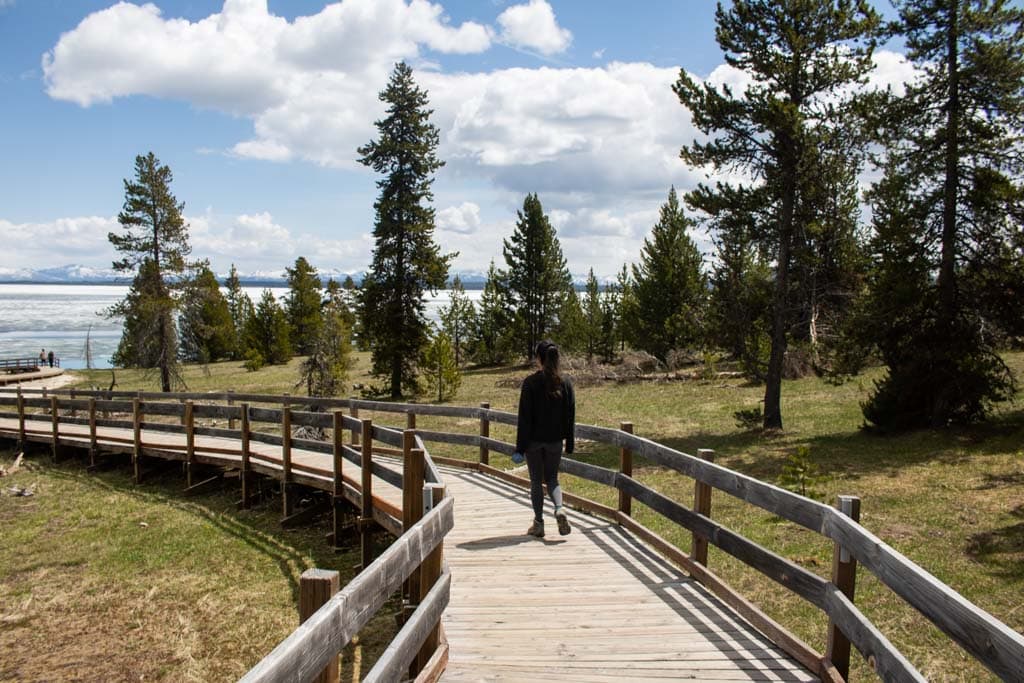
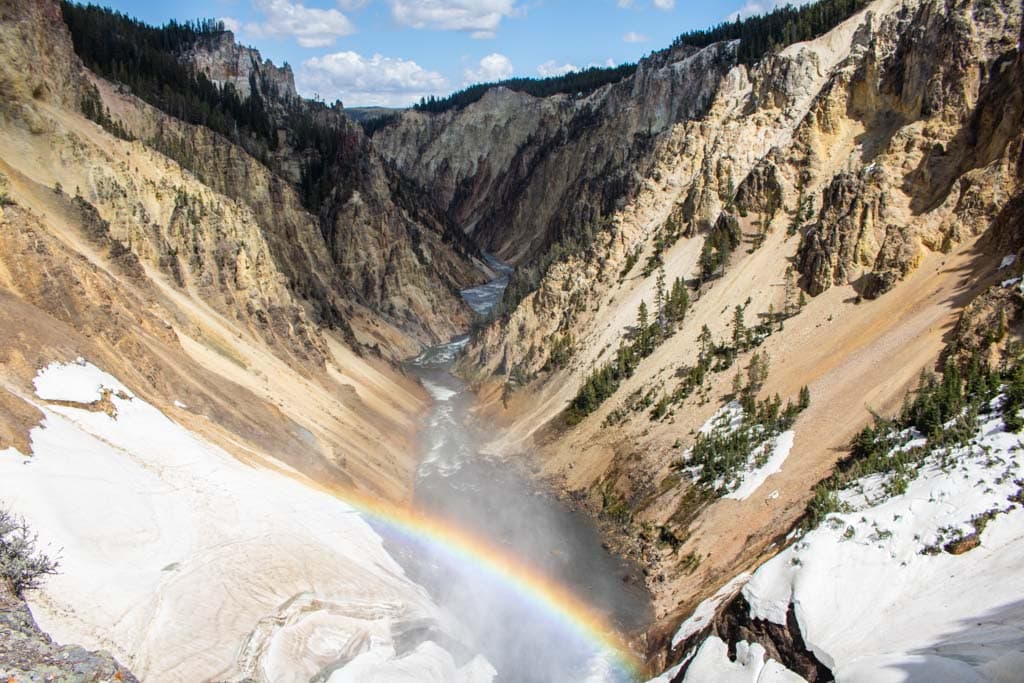
As you can see, there’s plenty to see and do in Yellowstone, which is why I recommend spending at least six full days in the park.
Yellowstone National Park Blog Posts
- Must-See Roadside Waterfalls in Yellowstone National Park
- Most Beautiful Places to Visit in Yellowstone National Park
- 19 Best Things to Do at Mammoth Hot Springs (Yellowstone)
- 11 Best Things to Do at Old Faithful (Yellowstone)
- The Ultimate Guide to Wildlife Watching in Yellowstone National Park
- 5 Main Features of Yellowstone: Wildlife, Geysers, Architecture & More
- 15 Scenic Spring Hikes in Yellowstone National Park
Recommended Grand Teton & Yellowstone National Park Books
- Yellowstone and Grand Teton National Parks (Full-Color Travel Guide) – Fodor’s Compass Guides
- Hiking Grand Teton National Park: A Guide to the Park’s Greatest Hiking Adventures – Falcon Guides
- Hiking Yellowstone National Park: A Guide To More Than 100 Great Hikes – Falcon Guides
- Empire of Shadows: The Epic Story of Yellowstone – George Black
- Deep Into Yellowstone: A Year’s Immersion in Grandeur & Controversy – Rick Lamplugh
- Yellowstone Ranger: Stories from a Life in Yellowstone – Jerry Mernin
- Decade of the Wolf: Returning the Wild to Yellowstone – Douglas Smith & Gary Ferguson
- The Reign of Wolf 21: The Saga of Yellowstone’s Legendary Druid Pack – Rick McIntyre
- Wild Rescues: A Paramedic’s Extreme Adventures in Yosemite, Yellowstone and Grand Teton – Kevin Grange
- Bring Jade Home: The True Story of a Dog Lost in Yellowstone and the People Who Searched for Her – Michelle Caffrey
- Taken by Bear in Yellowstone: More Than a Century of Harrowing Encounters between Grizzlies and Humans – Kathleen Snow
- Death in Yellowstone: Accidents and Foolhardiness in the First National Park – Lee H. Whittlesey
Glacier National Park, Montana
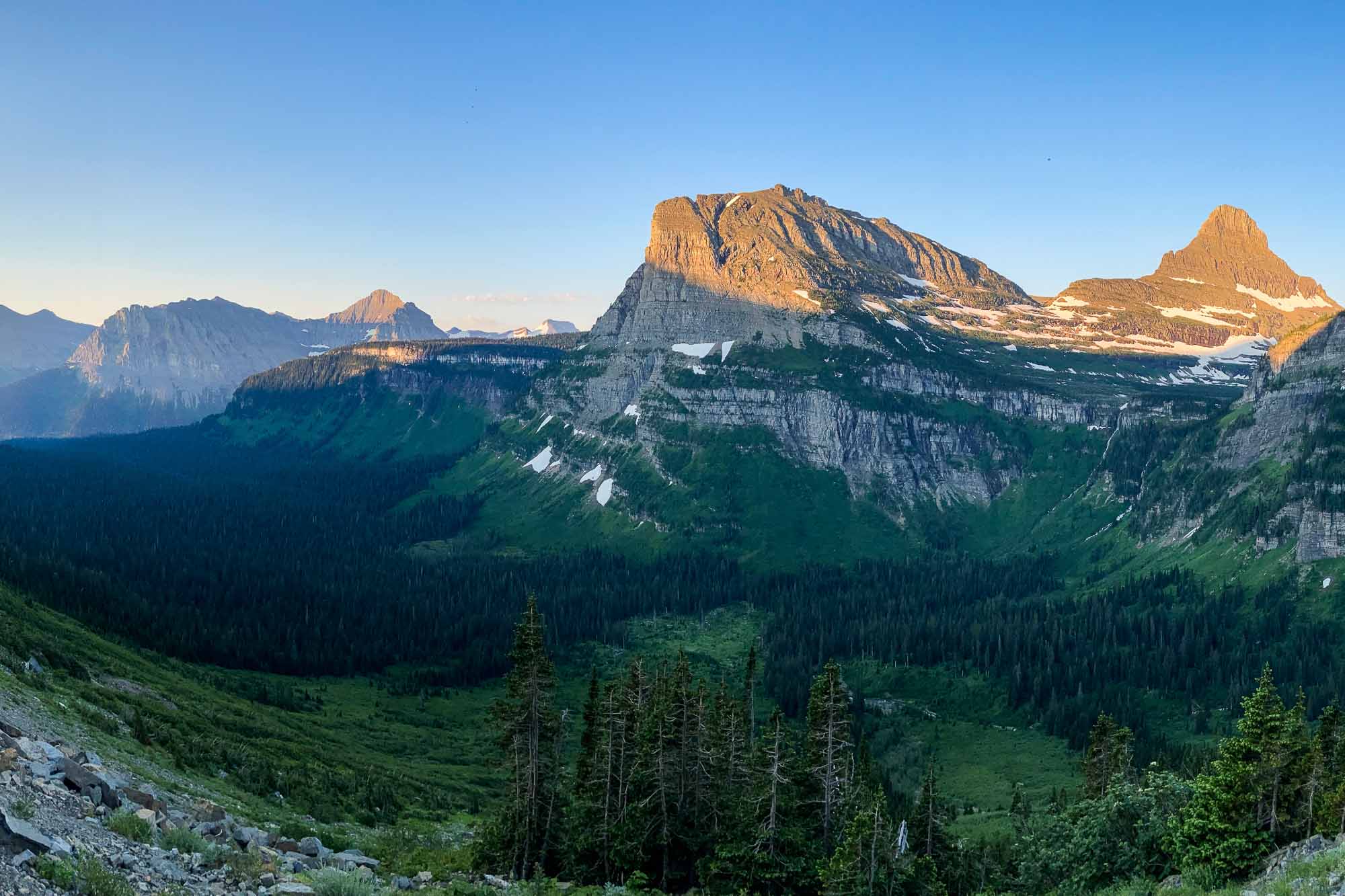
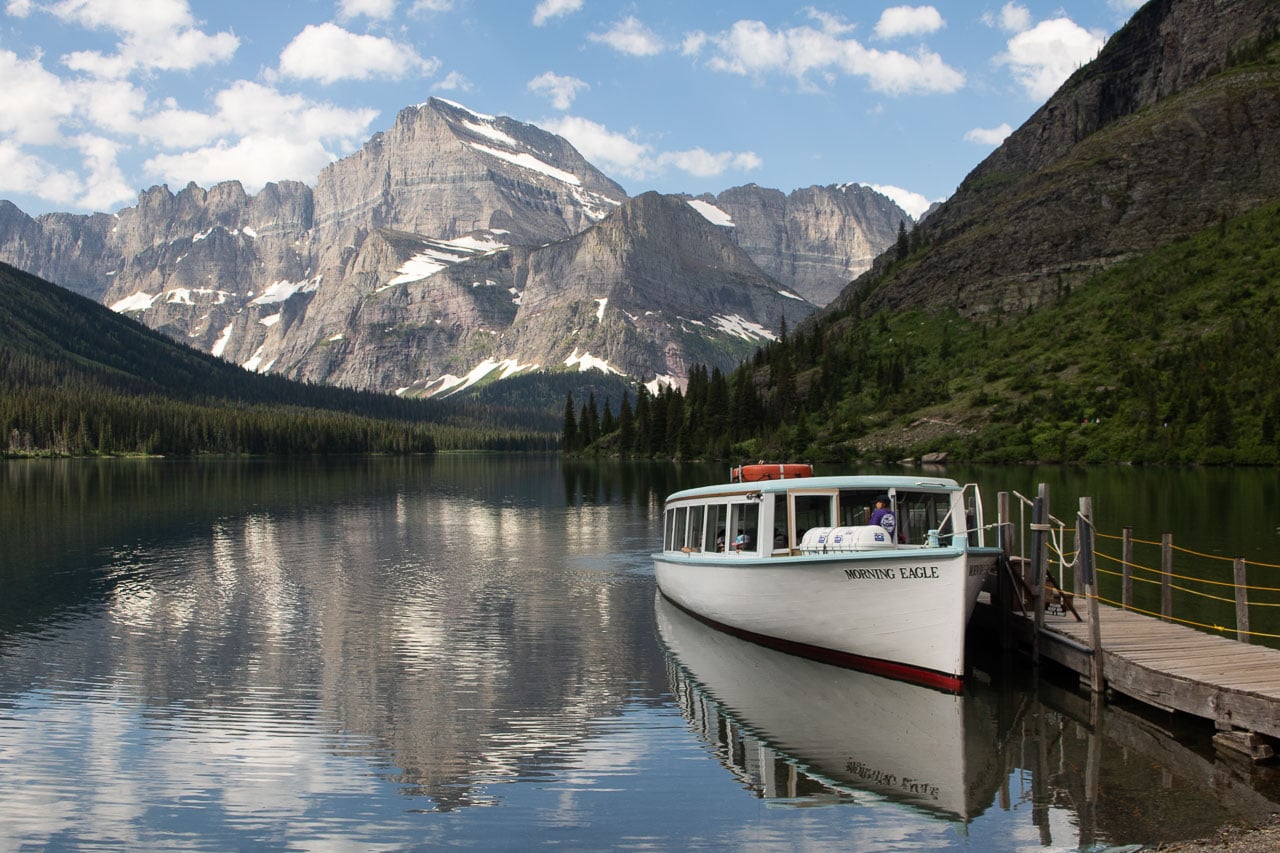
From Yellowstone, it’s a 6.5-hour drive across Montana to Glacier National Park. This awe-inspiring national park borders Canada’s Waterton Lakes National Park.
Together, both parks are a UNESCO World Heritage Site, Biosphere Reserve, International Dark Sky Park and the world’s first International Peace Park.
You can take a boat ride across the border between the two parks, the only U.S.-Canada border crossing where clearing customs is not required.
Known as the “Crown of the Continent”, Glacier National Park is the meeting point of various ecosystems, from northwest rain forests and inland prairies to tundra and mountains.
Glacier is famous for many things, but perhaps its most iconic feature is the Going-to-the-Sun Road.
This magnificent mountain road was completed in 1932 and, since then, has allowed many tens of millions of visitors to explore the heart of Glacier National Park.
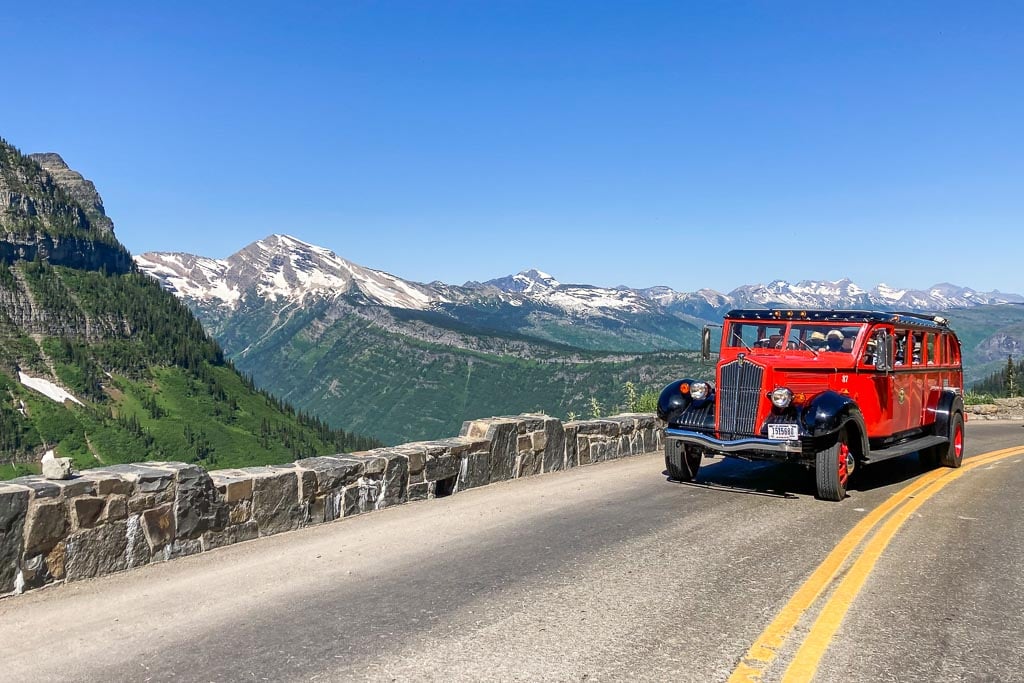
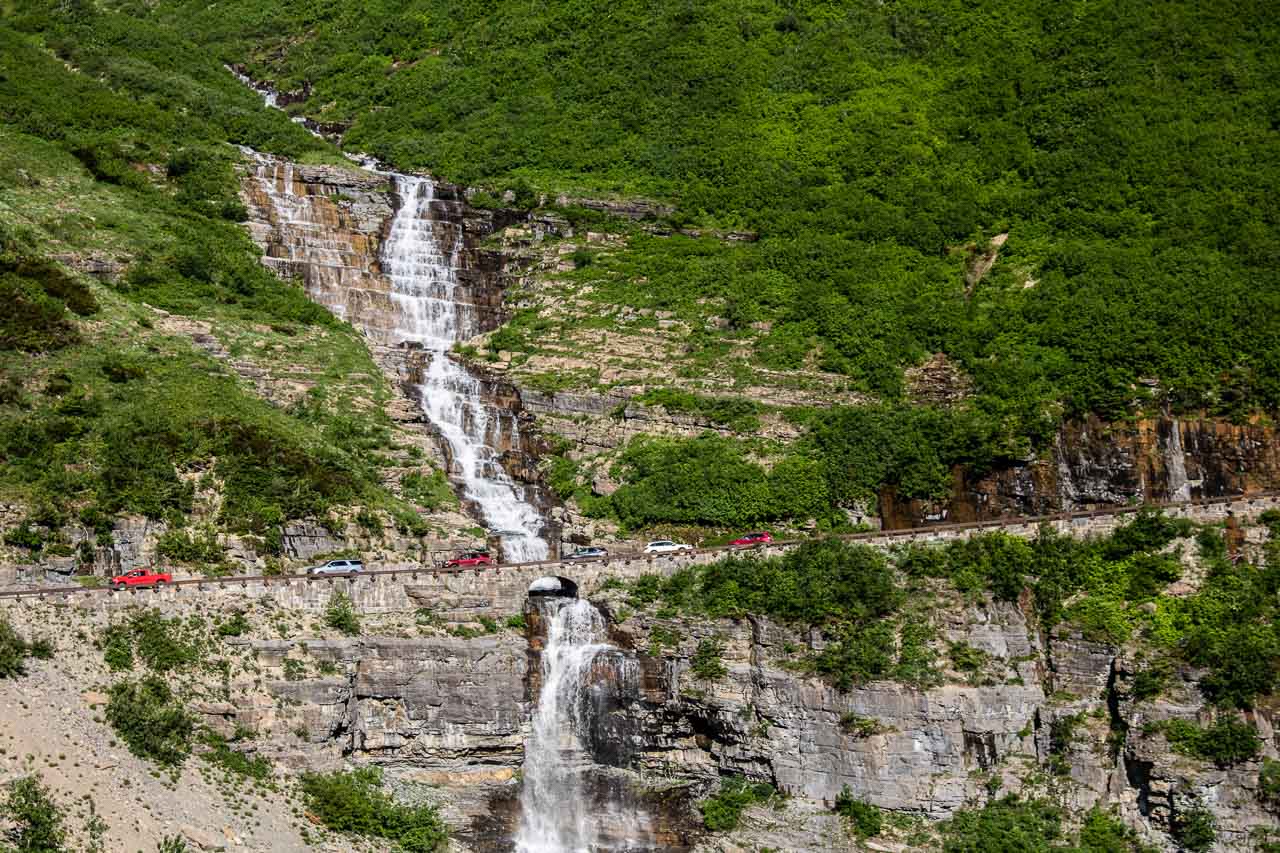
An engineering masterpiece and one of America’s greatest drives, the 50-mile-long Going-to-the-Sun Road takes you through pristine pine forests and past huge lakes to stunning Logan Pass.
Located on the Continental Divide, this is the highest point accessible by car in the park. Explore this gorgeous area on trails like the popular Hidden Lake Overlook Trail and the epic Highline Trail.
On the way, you can enjoy awesome panoramic views of glacier-carved valleys, see beautiful roadside waterfalls and spot wildlife such as bighorn sheep and mountain goats, the park’s official mascot.
Numerous hiking trails lead to shimmering turquoise lakes, gorgeous wildflower-filled meadows and jaw-dropping mountain passes.
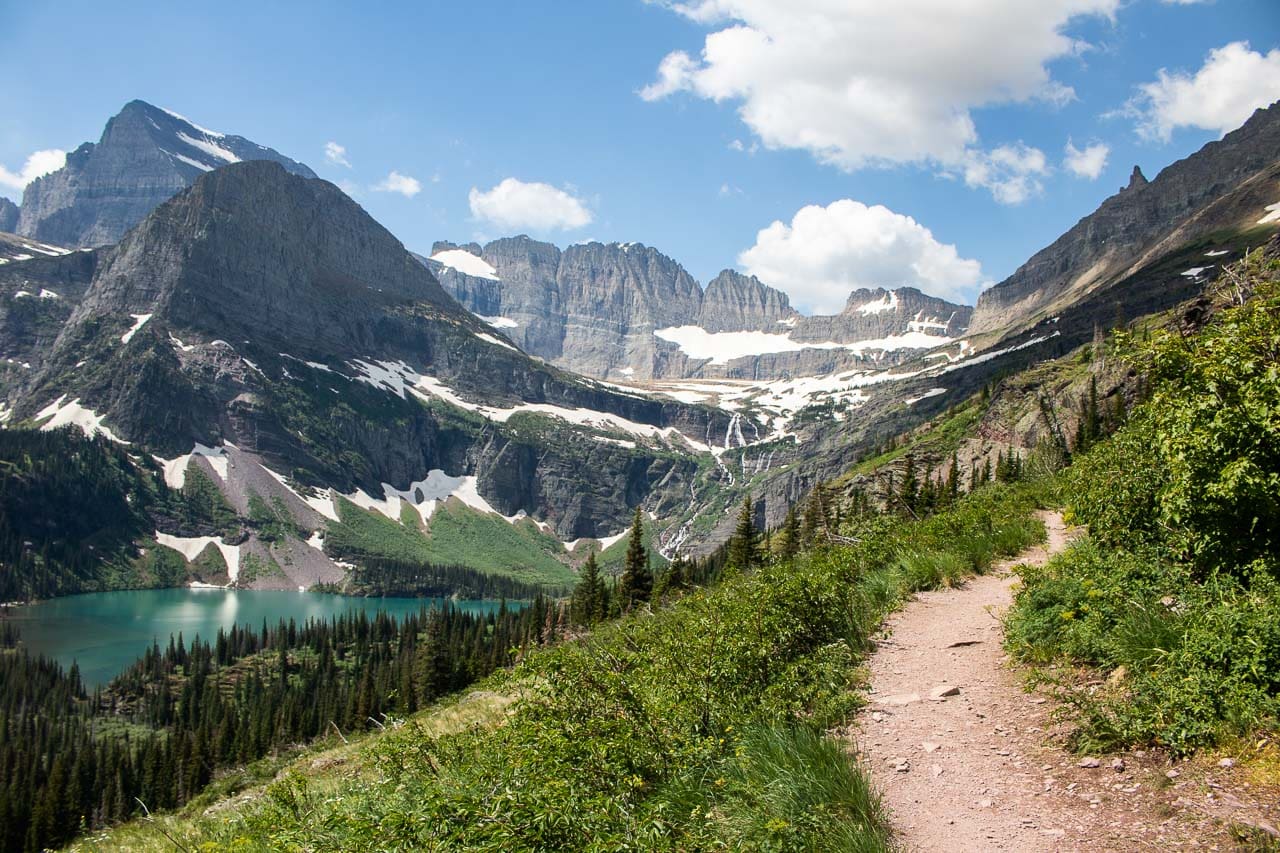
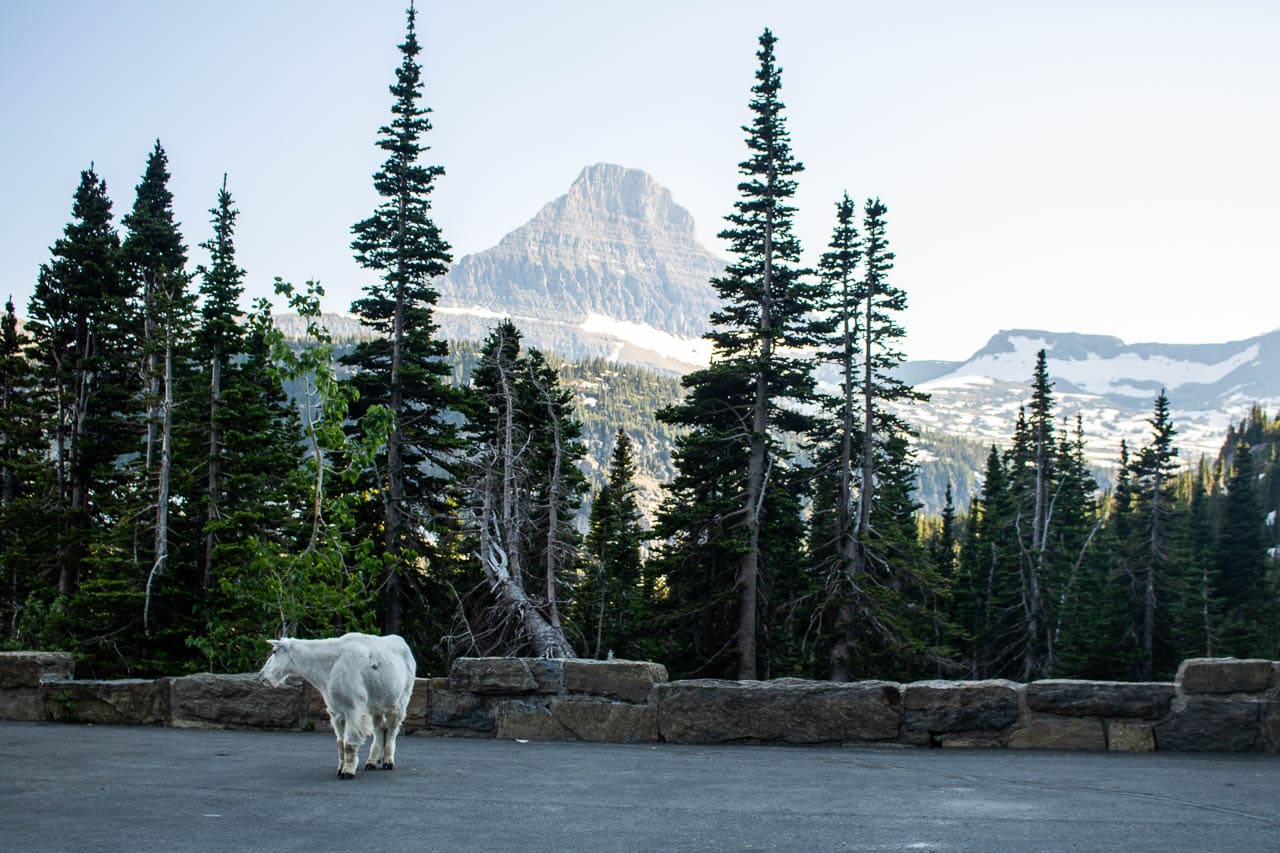
Elsewhere in the park, you can immerse yourself in beautiful scenery at places like Many Glacier and Two Medicine, both of which are a hiker’s paradise and wildlife haven. Animals you might see there range from black and grizzly bears to moose, mountain goats and bighorn sheep.
Popular trails lead to stunning high-country spots, such as Grinnell Glacier, Iceberg Lake and Swiftcurrent Pass.
In the west, Lake McDonald, the largest lake in Glacier National Park, offers a wide range of fun activities, including boating, kayaking, paddleboarding, and canoeing opportunities.
It’s also a great spot to see the sunset. Additionally, the beautiful Lake McDonald Lodge is one of the greatest lodges to stay at in the national parks.
St. Mary Lake, on the other hand, is on the east side of the Continental Divide. Along its north shore, you can spot moose, watch breathtaking sunrises at places like Wild Goose Island Overlook. This area offers great hiking as well, such as to St. Mary Falls and Virginia Falls.
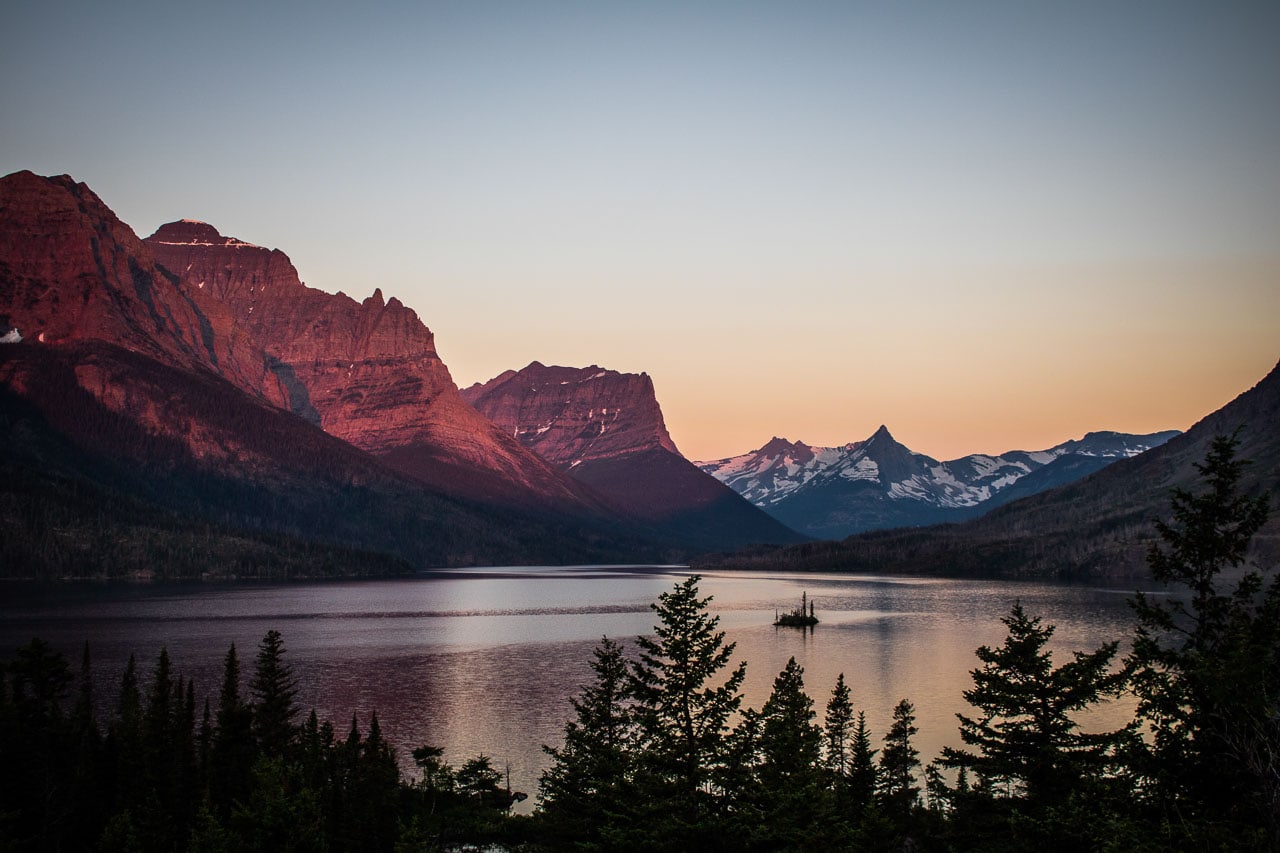
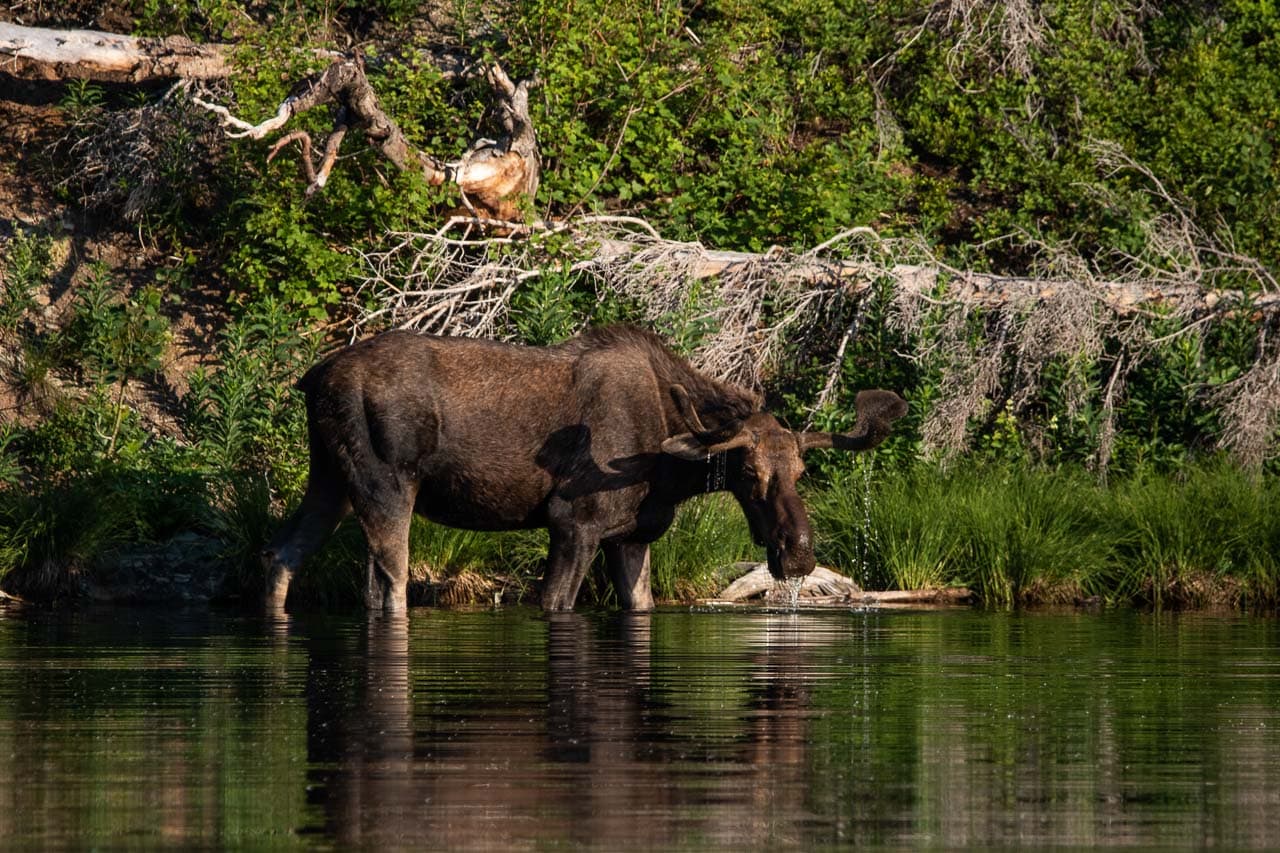
Popular activities, besides scenic drives, include backpacking, camping, wildlife viewing, boating, cycling and fishing.
Spend a few nights in or near the park and enjoy some world-class stargazing. With some luck, you might even see the elusive northern lights here, too—the best period for that is fall.
Glacier National Park Blog Posts
- Best Places to See Wildlife in Glacier National Park
- Amazing Going-to-the-Sun Road Highlights, Hikes, Overlooks & Scenic Spots
- 7 Unforgettable Panoramic Views on Going-to-the-Sun Road
- 10 Fantastic Photo Locations in Glacier National Park
- Greatest Hikes in Glacier National Park
Recommended Glacier National Park Books
- Glacier National Park: Hiking, Camping, Lakes & Peaks – Moon Travel Guide
- Hiking Glacier and Waterton Lakes National Parks: A Guide to the Parks’ Greatest Hiking Adventures – Falcon Guides
- Best Easy Day Hikes in Glacier and Waterton Lakes National Parks – Falcon Guides
- Death in Glacier National Park: Stories of Accidents and Foolhardiness in the Crown of the Continent – Randi Minetor
- Rangers, Trappers and Trailblazers: Early Adventures in Montana’s Bob Marshall Wilderness and Glacier National Park – John Fraley
Northern Rockies National Parks Road Trip FAQ
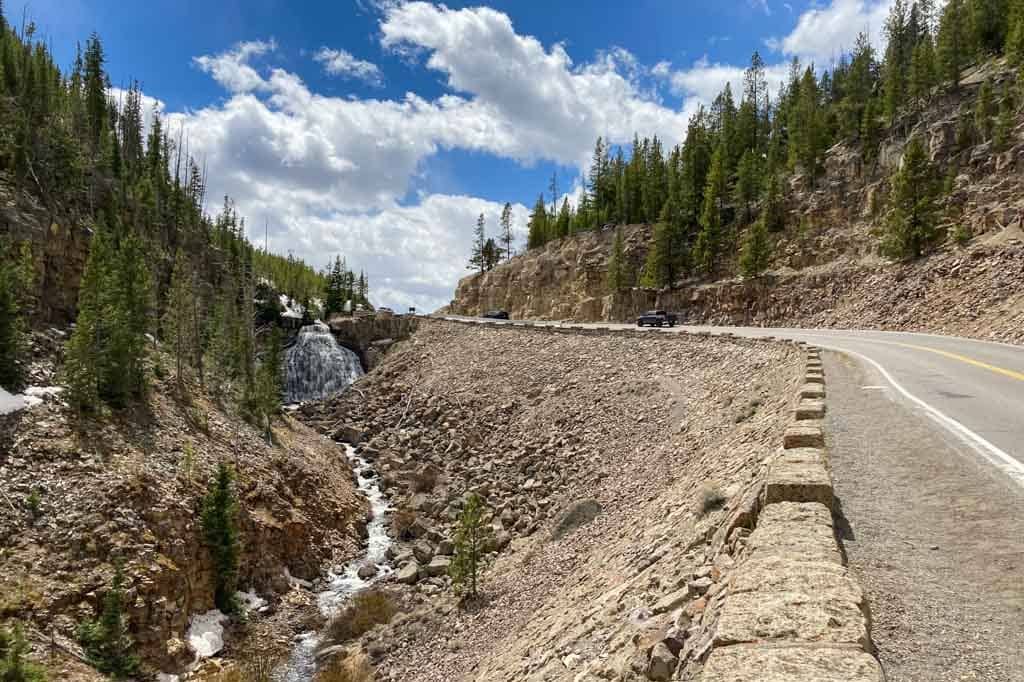
How Long Do I Need to See These Three Northern Rocky Mountains National Parks?
I’d recommend planning at least two weeks for this fantastic northern Rockies national parks road trip. If you can, spend a minimum of three days in each park.
This will allow you to fully explore and experience all three parks, while also giving you sufficient time to drive between the parks and/or your accommodations.
- Grand Teton National Park: 3 days
- Yellowstone National Park: 6 days
- Glacier National Park: 4 days
Where Should I Start and End My Road Trip?
You could start this road trip to the northern Rocky Mountains national parks in various places in Wyoming and Montana, even in cities like Salt Lake City, Utah, which is only five hours from Grand Teton.
To avoid unnecessarily long drives at the start or end of your trip, however, you might want to fly into Jackson Hole, Wyoming and fly out of Kalispell, Montana.
Those two airports are the nearest public airports to respectively Grand Teton National Park and Glacier National Park. They’re located absolutely perfectly for a one-way road trip to these northern Rockies national parks.
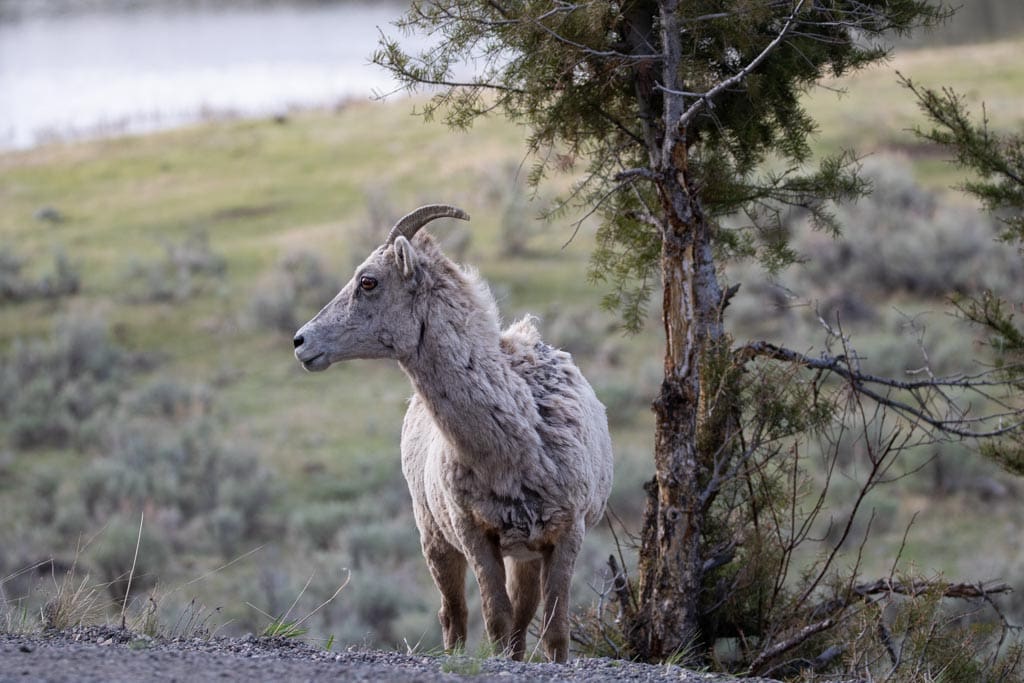
Which Animals Can I See on a Northern Rockies National Parks Road Trip?
With the exception of muskoxen, caribou and polar bears, all of which live near or in the Arctic, you can see almost all North American megafauna in the national parks of the northern Rocky Mountains.
This includes American bison, elk, moose, pronghorn, bighorn sheep, mountain goats, black bears, grizzly bears and gray wolves. And they’re surprisingly easy to see, too.
Especially if you spend two or more days in each park, which I recommend, you should be able to see at least several of these animals.
What Lodges Should I Stay At?
Some of the great historic lodges and hotels in America are located in these northern Rockies national parks. Staying at one of them will most likely be one of the highlights of your trip.
I recommend choosing one lodge in Grand Teton for your visit, and two different places in both Yellowstone and Glacier. Here are my suggestions:
- Grand Teton National Park: Signal Mountain Lodge or Jenny Lake Lodge
- Yellowstone National Park: Mammoth Hot Springs Hotel and Old Faithful Inn
- Glacier National Park: Lake McDonald Lodge and Many Glacier Hotel
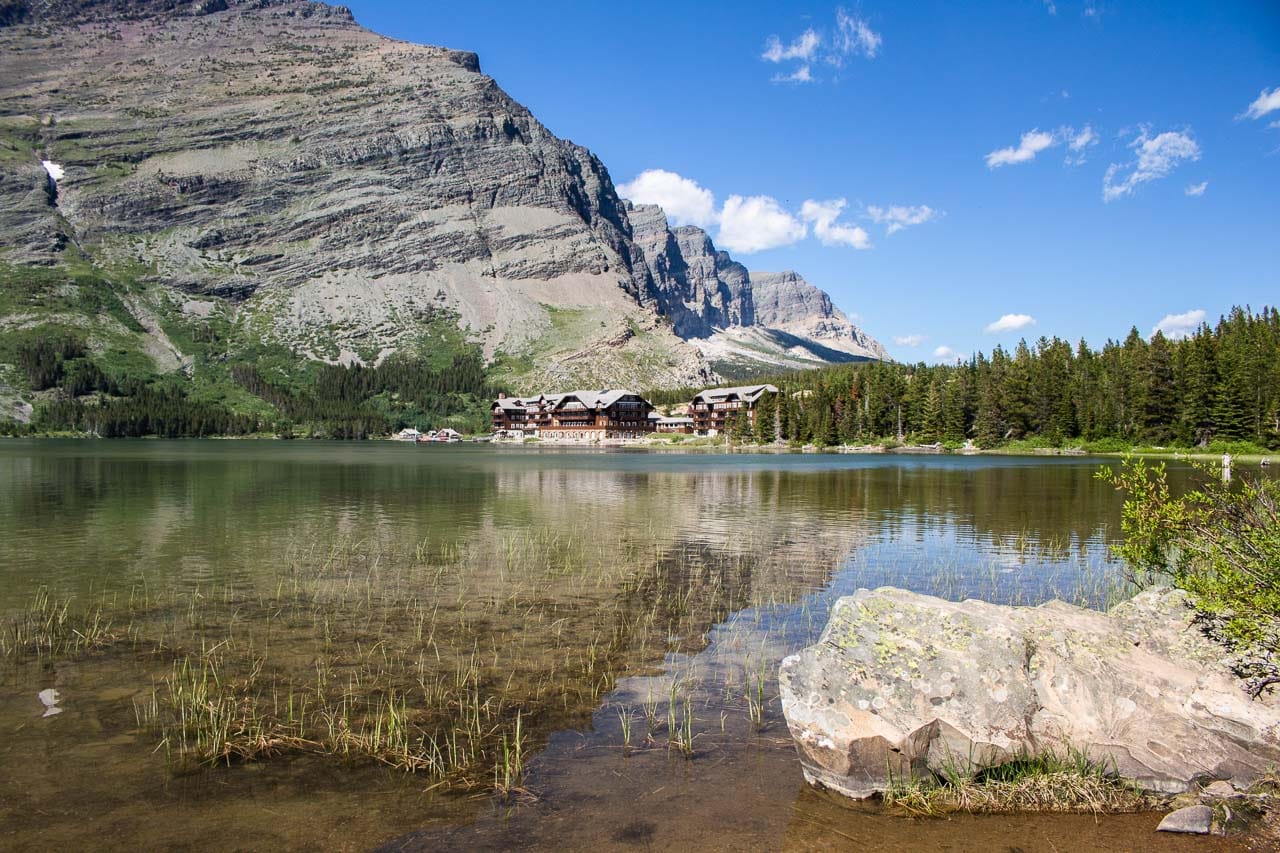
What Are the Best Campgrounds in These National Parks in the Northern Rockies?
There are numerous campgrounds in Grand Teton, Yellowstone and Glacier. If you’re looking for the most strategic places to set up camp for a few days in these parks, I’d suggest the following.
Note that, similar to the lodge suggestions above, I strongly recommend staying at different locations in both Yellowstone and Glacier. Both parks are huge and choosing two basecamps during your visit will save a lot of back-and-forth driving.
- Grand Teton National Park: Signal Mountain Campground
- Yellowstone National Park: Mammoth Hot Springs Campground and Canyon Campground
- Glacier National Park: Avalanche Campground and Many Glacier Campground
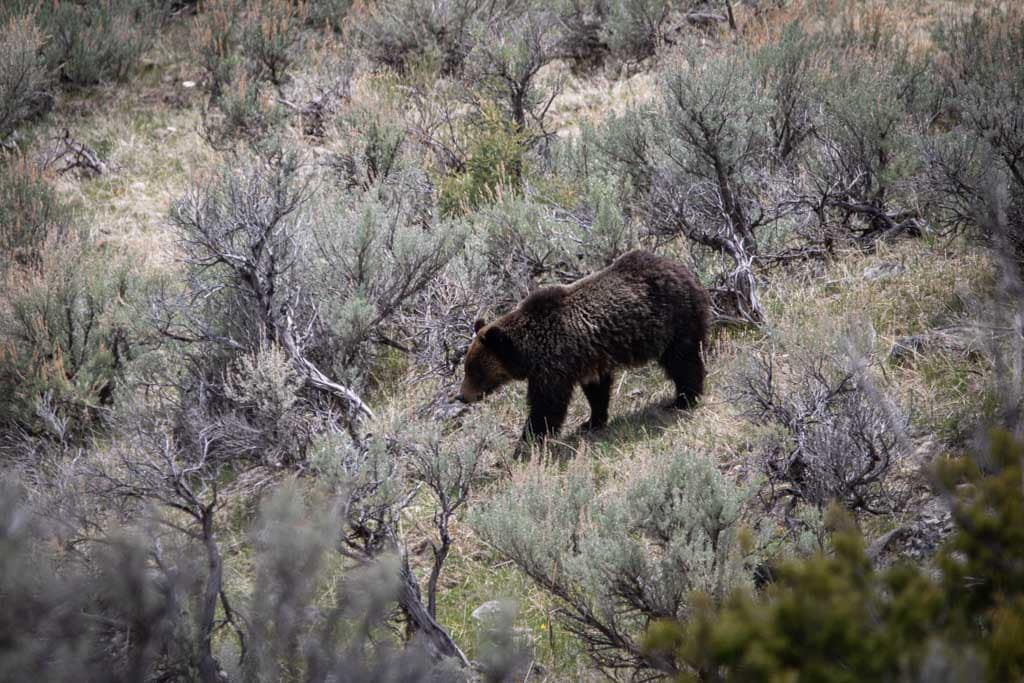
Wildlife Safety in the National Parks of the Northern Rockies
Many visitors might consider grizzly bears to be the most terrifying wild animal in the national parks. However, in reality, significantly more people are injured by bison and moose every year. Always remember that all wildlife is, in fact, wild and unpredictable.
Here are some basic tips to safely observe wildlife on your northern Rockies national parks road trip, which will keep both yourself and the animals unharmed:
- Never approach wild animals or follow them.
- If an animal approaches you, back away slowly to keep a safe distance.
- Use binoculars, a spotting scope or telephoto lens to view or photograph wildlife.
- As a general rule of thumb, if an animal reacts to your presence, you’re too close. Move away.
- When possible, hike in groups of at least 3 people.
- Make noise while hiking, especially in areas with low visibility. Clap your hands, shout, whistle, sing…
- Stay inside or close to your car when observing black or grizzly bears.
- Always carry bear spray when you’re outside in each of these three national parks. This includes busy areas like overlooks, popular trails, parking lots and around visitor centers. Learn how to use bear correctly here.
- You must stay at least 100 yards from bears and wolves, and at least 25 yards from all other animals, including birds.
Additionally, you can find more detailed information about how to behave during encounters with potentially dangerous animals in the following wildlife safety guides.

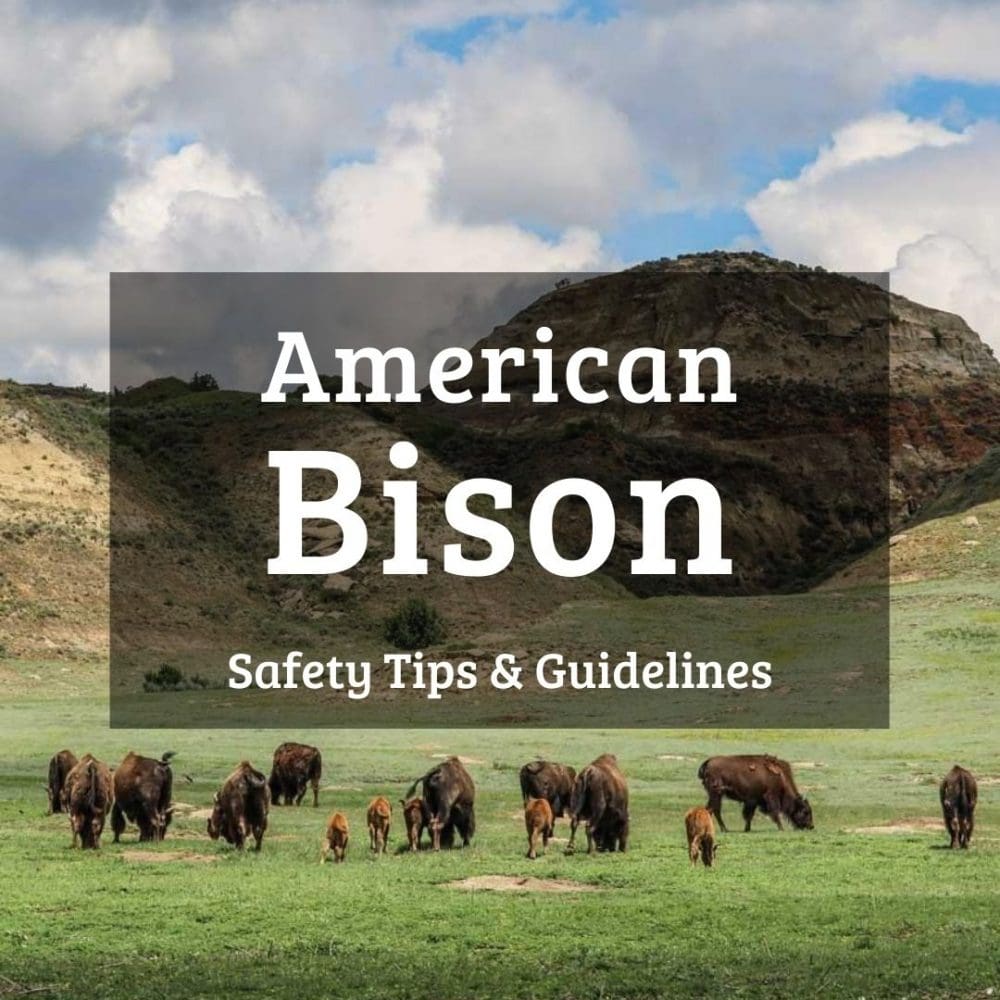
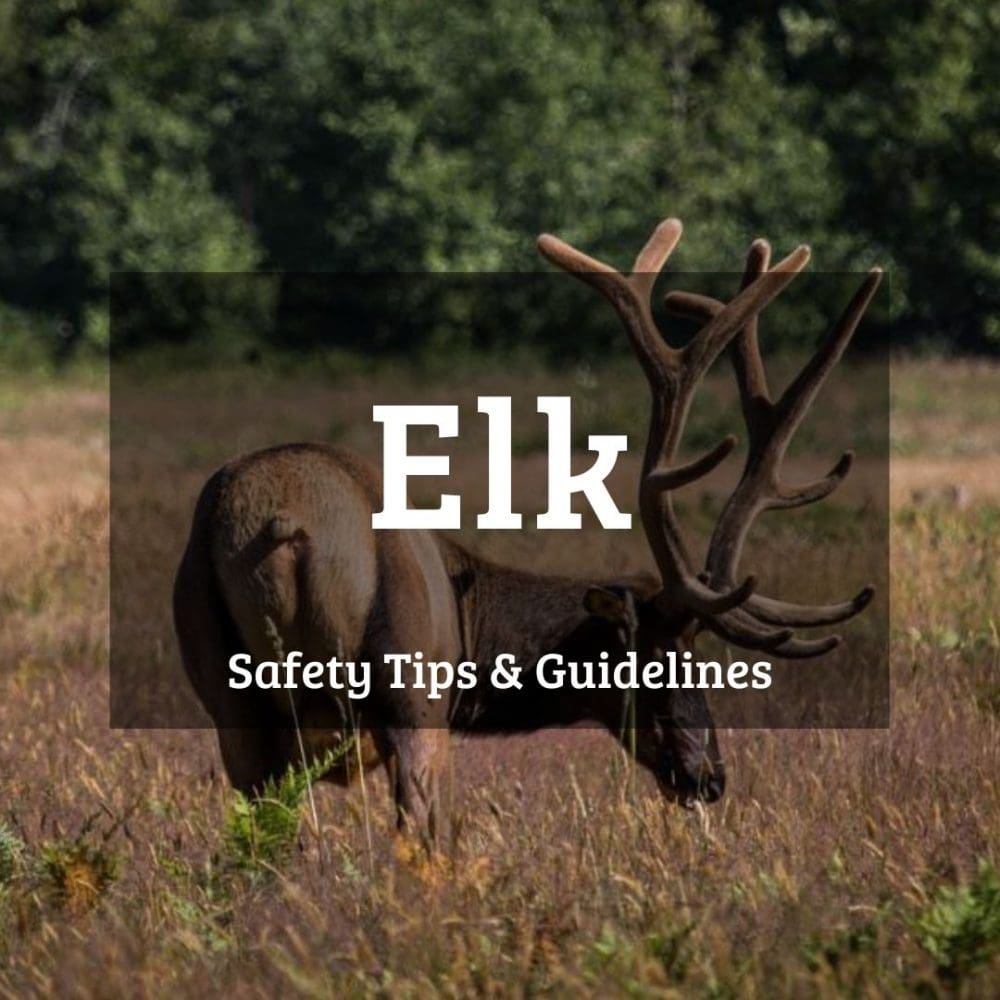
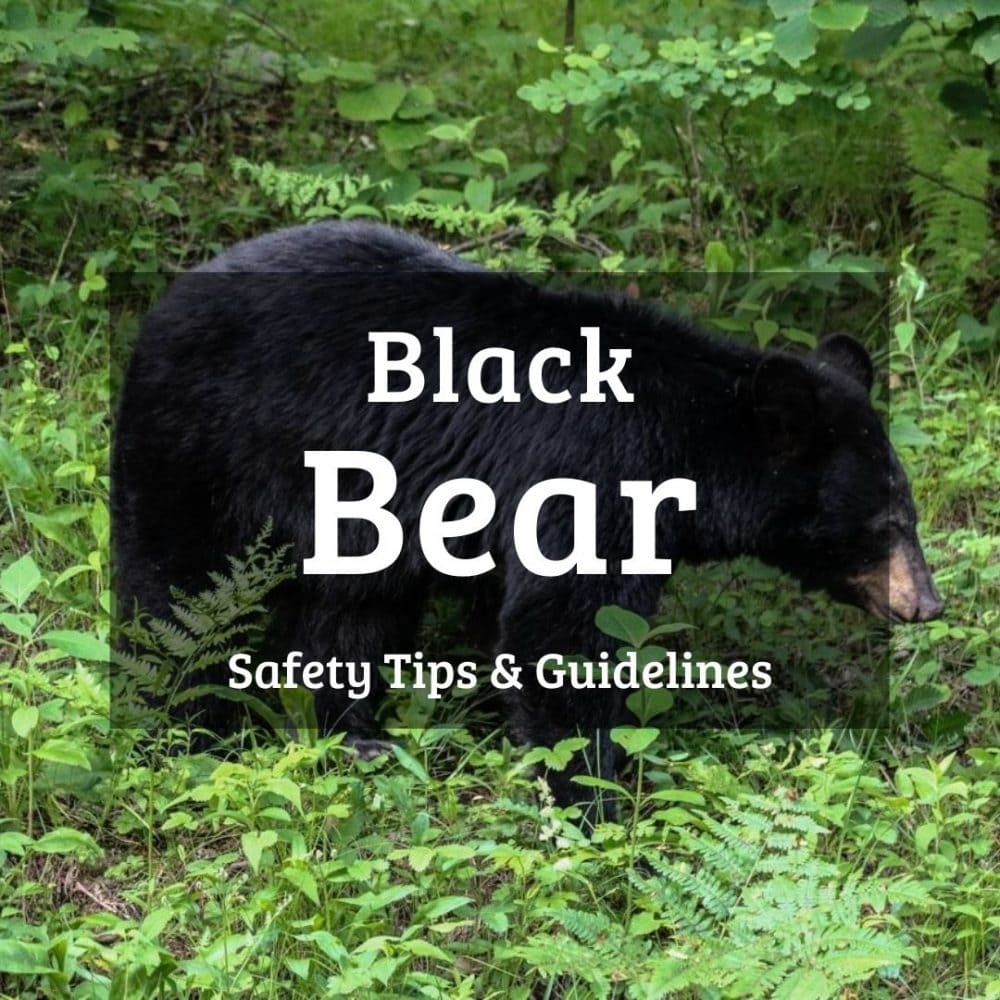
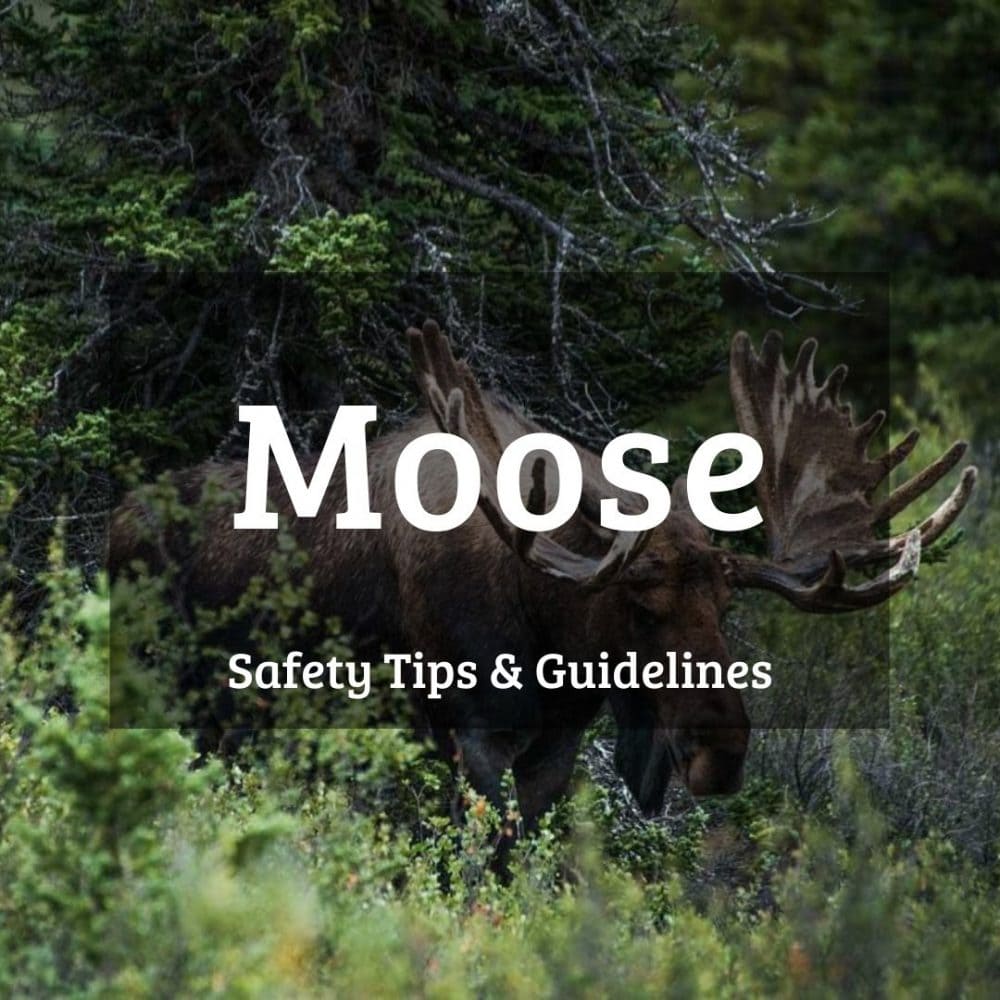
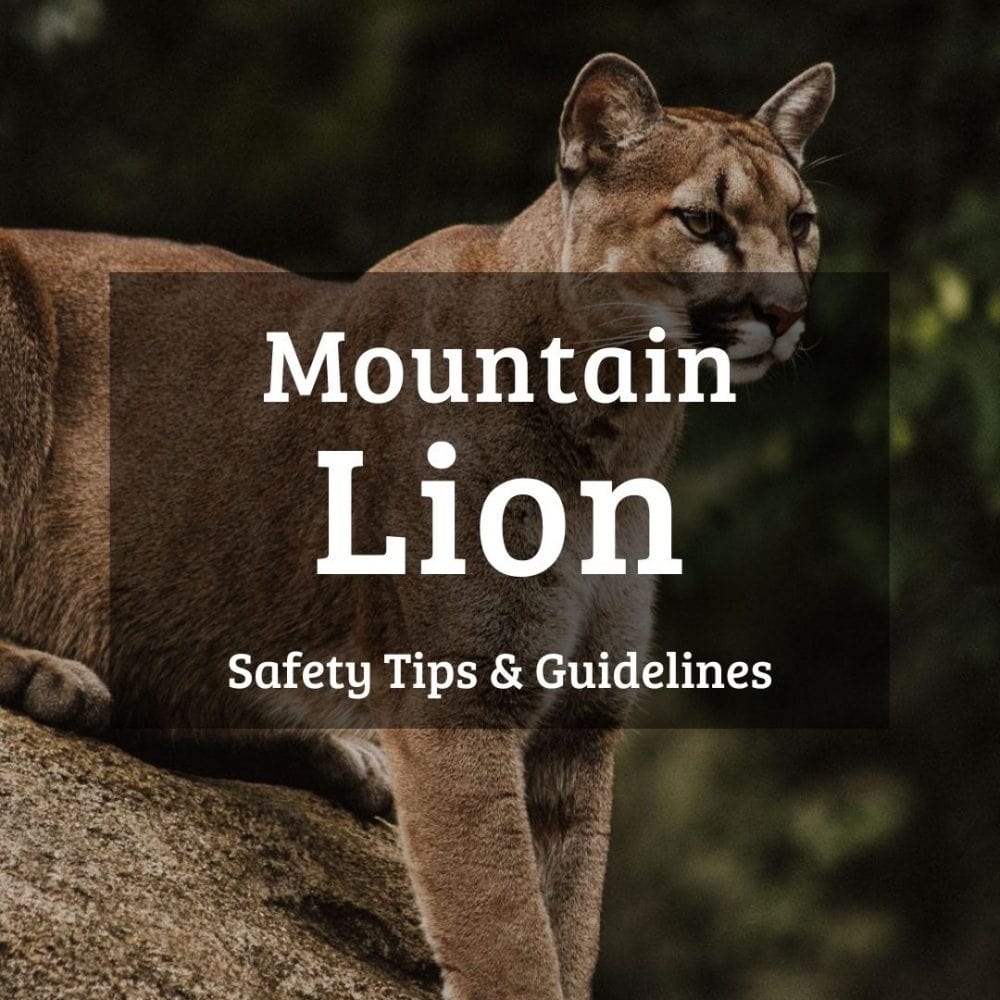
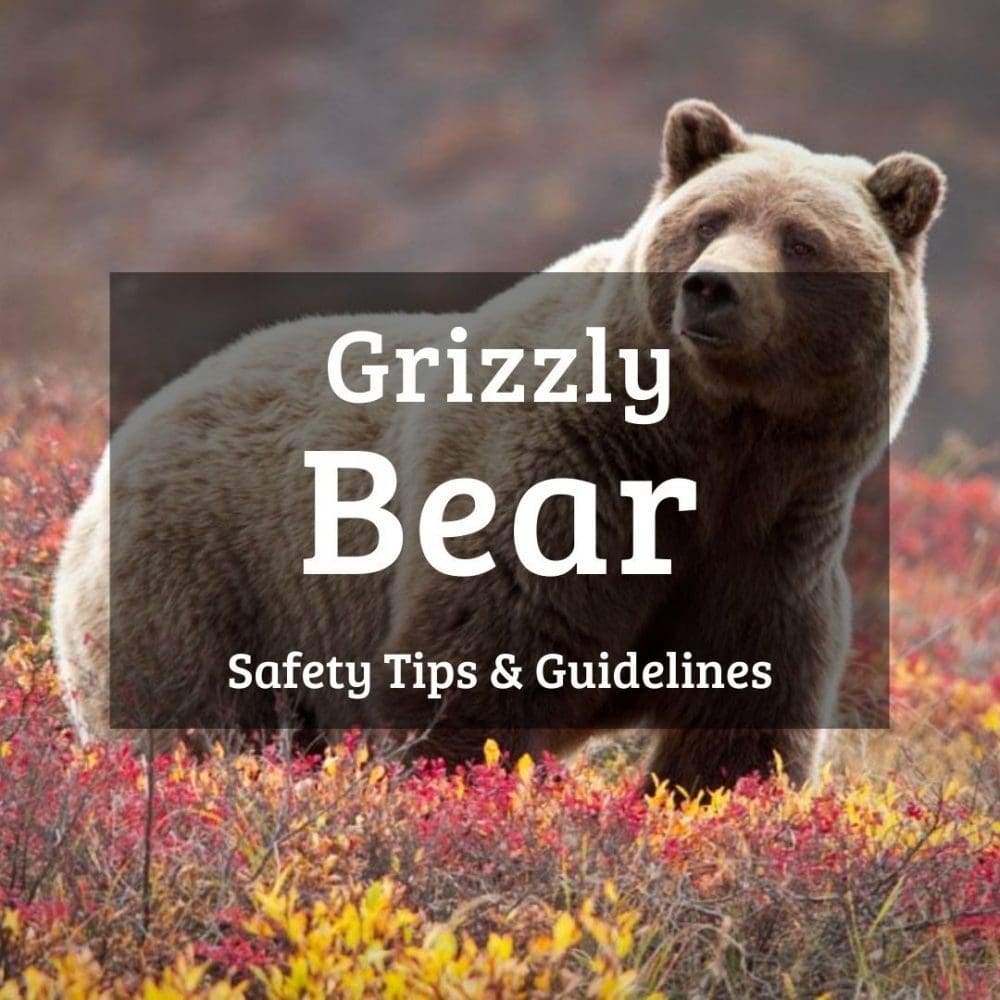
MountainGoat
Sunday 14th of August 2022
Please stop referring to the American side of the Rocky Mountain Range as "Northern Rockies." This simply isn't true. It's just the Rocky Mountains down there. The wiki of "Northern Rockies" explains the term is reserved for the Canadian Rocky Mountains.
Bram
Sunday 14th of August 2022
I am not calling all of America's Rocky Mountains the Northern Rockies. I reserve that description for the northern part of the Rocky Mountains in the United States (the Middle Rockies and Southern Rockies are also a thing). This has nothing to do with how people in Canada describe their own regions of the Rocky Mountains. The "Northern Rockies" on this blog are the Rocky Mountains in the states of Wyoming, Montana and Idaho, similar to the descriptions used by the National Parks Conservation Association (https://www.npca.org/regions/northern-rockies) and the National Park Service (https://www.nps.gov/articles/rockies.htm).